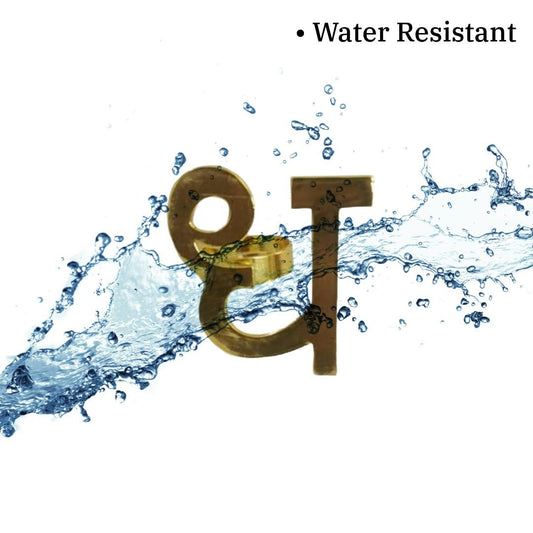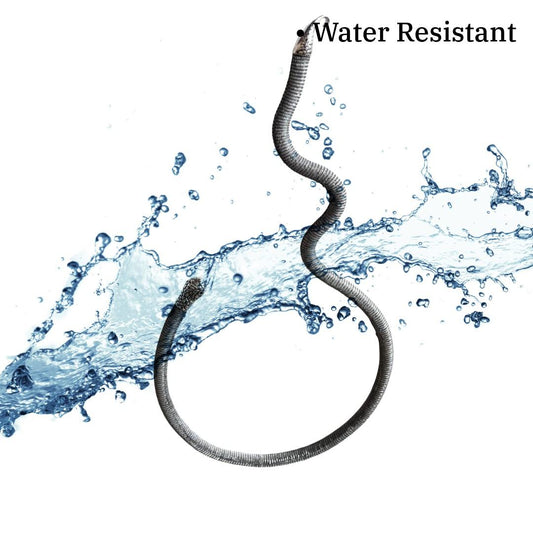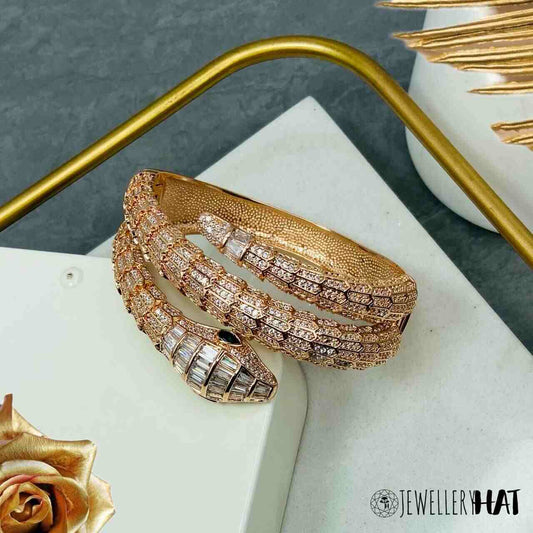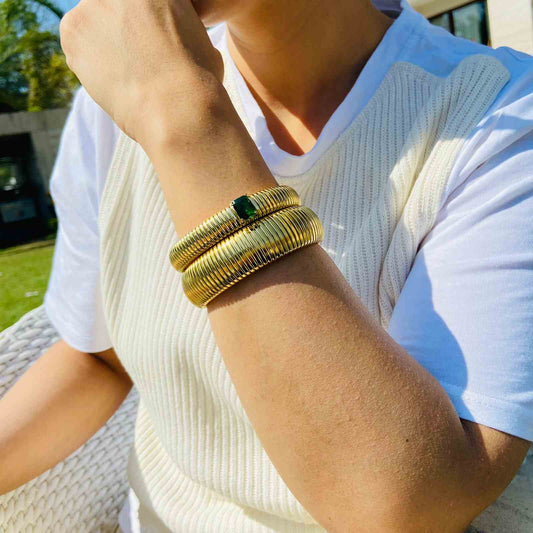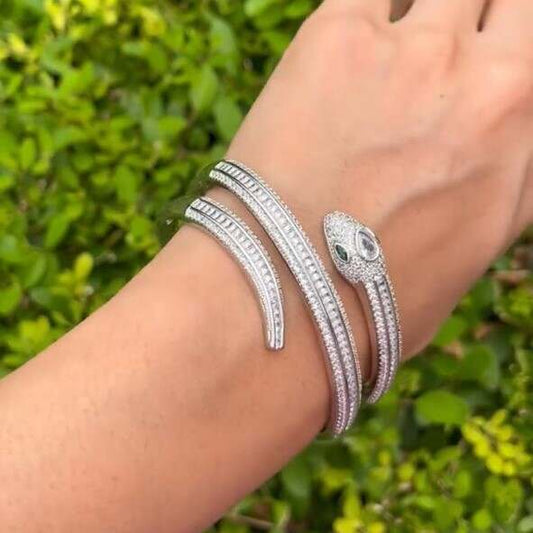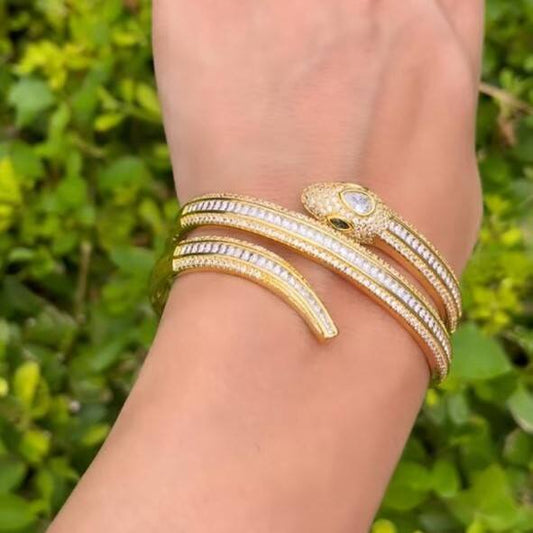Jewelry is a cherished element of personal style, and at Jewellery Hat, one of India’s fastest-growing fashion jewelry brands, we are dedicated to providing pieces that blend elegance with durability. Our extensive range includes earrings, necklaces, bracelets, and rings, all crafted from high-quality stainless steel. You might be wondering, "Does stainless steel tarnish?" This comprehensive guide will delve into the science behind stainless steel, why it’s a popular choice for jewelry, and how to ensure your stainless steel pieces stay as beautiful as the day you first wore them.
What is Stainless Steel?
To fully understand whether stainless steel tarnishes, it's essential to grasp what stainless steel is and why it's so widely used in various applications, including fashion jewelry. Stainless steel is renowned for its exceptional durability, resistance to corrosion, and aesthetic appeal. Let’s delve into the specifics of this remarkable alloy and explore its composition and properties.
Understanding Stainless Steel
Stainless steel is a corrosion-resistant alloy made primarily from iron and enriched with chromium, and sometimes nickel, along with other elements. This alloy's unique properties arise from its composition and the combination of these elements, which work together to give stainless steel its renowned strength and resilience.
Why is Stainless Steel Used?
Stainless steel's popularity in various applications, including fashion jewelry, comes from several key characteristics:
- Durability: Stainless steel is known for its remarkable strength and durability. It can withstand wear and tear, making it ideal for everyday use in jewelry.
- Corrosion Resistance: One of the primary reasons for using stainless steel is its resistance to rust and corrosion. This property is essential for maintaining the appearance and longevity of jewelry.
- Aesthetic Appeal: Stainless steel has a sleek, shiny appearance that is often favored in modern fashion. It retains its polish and looks attractive even with regular use.
- Low Maintenance: Unlike other metals that may require frequent polishing, stainless steel is relatively low maintenance. It is less prone to tarnishing and does not require special cleaning products.
The Composition of Stainless Steel
The composition of stainless steel is crucial to understanding why it is so resistant to tarnishing and corrosion. Let’s break down the primary elements that make up stainless steel:
Iron (Fe)
- Core Component: Iron is the fundamental element in stainless steel, providing the alloy with its basic strength and structure. It acts as the base metal to which other elements are added.
- Role in Stainless Steel: While iron alone is susceptible to rust and corrosion, when combined with chromium and other elements, it forms a more resilient alloy.
Chromium (Cr)
- Essential Element: Chromium is a key component in stainless steel, typically present in concentrations ranging from 10.5% to 30%. It plays a crucial role in the alloy's corrosion resistance.
-
Chromium Oxide Layer: The primary function of chromium is to form a thin, protective layer of chromium oxide on the surface of the stainless steel. This layer acts as a barrier between the steel and the environment, preventing oxidation and rust.
- Self-Healing Properties: The chromium oxide layer is self-healing. If it becomes damaged, it quickly reforms when exposed to oxygen, maintaining the steel's resistance to tarnishing and corrosion.
- Protection from Tarnishing: This oxide layer is crucial in protecting stainless steel from tarnishing. It prevents the underlying metal from reacting with sulfur and moisture in the air, which are common causes of tarnishing in other metals.
Nickel (Ni)
- Enhancer of Toughness: Nickel is often added to stainless steel to improve its toughness and resistance to oxidation. It also enhances the alloy's ability to withstand high temperatures.
- Contributes to Aesthetic Appeal: Nickel contributes to the alloy’s bright, polished finish. It helps in maintaining a shiny and attractive appearance, which is especially desirable in fashion jewelry.
- Impact on Corrosion Resistance: By enhancing the alloy's ability to resist oxidation, nickel further supports stainless steel’s resistance to tarnishing and corrosion.
Types of Stainless Steel
There are different grades and types of stainless steel, each tailored to specific applications based on its composition. Here are the most common types used in jewelry:
-
Austenitic Stainless Steel (e.g., 304, 316L):
- Characteristics: High corrosion resistance, excellent formability, and a shiny surface. Austenitic stainless steel is non-magnetic and often used in high-quality jewelry.
- Application: Most fashion jewelry, including earrings, necklaces, bracelets, and rings, is made from this type due to its durability and aesthetic appeal.
-
Martensitic Stainless Steel (e.g., 410, 420):
- Characteristics: Higher strength and hardness compared to austenitic stainless steel but lower corrosion resistance. It is magnetic and can be hardened by heat treatment.
- Application: Less common in jewelry but used in specific applications requiring high strength.
-
Ferritic Stainless Steel (e.g., 430):
- Characteristics: Good corrosion resistance and magnetic properties. It is less ductile than austenitic stainless steel but is often used in applications where magnetic properties are advantageous.
- Application: Used in decorative items and some jewelry components.
Why Stainless Steel Is Ideal for Jewelry
The unique combination of iron, chromium, and nickel in stainless steel gives it properties that make it particularly suitable for jewelry:
- Durability and Strength: Stainless steel’s strength ensures that jewelry pieces maintain their shape and structure even with daily wear.
- Corrosion and Tarnish Resistance: The chromium oxide layer prevents rust and tarnish, ensuring that stainless steel jewelry retains its shine and appearance over time.
- Low Maintenance: Stainless steel requires minimal maintenance compared to other metals, making it a practical choice for everyday jewelry.
The Science Behind Tarnishing in Stainless Steel
When asking, "Does stainless steel tarnish?" it’s crucial to understand the science behind it. Stainless steel is highly resistant to tarnishing due to its protective chromium oxide layer. This layer forms when chromium reacts with oxygen in the air, creating a thin, protective barrier that prevents further oxidation and tarnishing.
- Chromium Oxide Layer: The formation of this layer is key to stainless steel's resistance to tarnishing. If this layer is scratched or damaged, it quickly regenerates, maintaining the steel’s tarnish-resistant properties.
- Reduced Reactivity: Stainless steel is less reactive to sulfur, salt, and moisture compared to other metals. This reduced reactivity contributes to its lower susceptibility to tarnishing.
Does Stainless Steel Tarnish?
So, does stainless steel tarnish? While stainless steel is designed to be highly resistant to tarnishing, it is not entirely immune. Tarnishing in stainless steel is rare but can occur under specific conditions.
Factors Leading to Tarnishing
-
Exposure to Harsh Chemicals:
- Household Cleaners: Strong acids or alkalis found in cleaning products can damage the chromium oxide layer, potentially leading to tarnishing.
- Bleach and Chlorine: Prolonged exposure to bleach or chlorine can compromise the protective layer, resulting in discoloration or tarnish.
-
High Levels of Humidity and Moisture:
- Water Exposure: While stainless steel is resistant to water, prolonged exposure or immersion can lead to tarnishing if the protective layer is compromised.
- High Humidity: Environments with high humidity levels can contribute to tarnishing if moisture interacts with the metal surface.
-
Accumulation of Dirt and Oils:
- Body Oils and Sweat: Natural oils from your skin and sweat can accumulate on the surface, causing a dull appearance if not regularly cleaned.
- Dirt and Residues: Dirt and other residues can also affect the appearance of stainless steel jewelry, leading to a tarnished look over time.
How to Prevent Tarnishing in Stainless Steel Jewelry
To answer the question, "Does stainless steel tarnish?" effectively, it’s important to implement strategies that minimize tarnishing. Here are practical tips to keep your stainless steel jewelry looking its best:
1. Regular Cleaning
- Use a Soft Cloth: Regularly wipe your stainless steel jewelry with a microfiber or polishing cloth to remove oils, dirt, and residues. This simple step can prevent tarnishing and maintain its shine.
- Mild Soap Solution: Clean your jewelry with a mild soap and water solution. Soak briefly, then use a soft brush or cloth to clean. Avoid harsh chemicals that can damage the metal.
2. Proper Storage
- Dry Environment: Store your jewelry in a dry place. High humidity and moisture can contribute to tarnishing, so keep your pieces in a dry, cool environment.
- Airtight Containers: Use airtight containers or pouches to minimize exposure to air and moisture. This helps prevent tarnishing and preserves the jewelry’s appearance.
3. Avoid Harsh Chemicals
- Remove Jewelry During Cleaning: Take off your stainless steel jewelry before using cleaning products or engaging in activities that involve harsh chemicals.
- Apply Products Before Wearing Jewelry: Apply lotions, perfumes, and other beauty products before putting on your jewelry. This reduces the risk of tarnishing from chemical interactions.
4. Regular Inspection
- Check for Residues: Regularly inspect your jewelry for dirt or residue buildup. Early cleaning can prevent tarnishing and keep your jewelry looking new.
- Address Issues Promptly: If you notice any signs of tarnishing, clean your jewelry promptly to prevent further discoloration.
Jewellery Hat’s Commitment to Quality
At Jewellery Hat, we take pride in offering high-quality fashion jewelry that combines style and durability. Our stainless steel pieces are designed to be tarnish-resistant, providing you with long-lasting beauty and elegance.
Why Choose Jewellery Hat?
- Anti-Tarnish Stainless Steel: Our jewelry is crafted from high-quality stainless steel, known for its resistance to tarnishing. This ensures your pieces remain as beautiful as the day you first wore them.
- Diverse Collection: Explore our wide range of earrings, necklaces, bracelets, and rings, all made from stainless steel. Each piece is designed to enhance your style while maintaining its shine.
- Lifetime Replacement Warranty: We offer a lifetime replacement warranty on polishing, reflecting our commitment to quality and customer satisfaction. Our expert team ensures your jewelry remains in pristine condition.
Conclusion
In conclusion, stainless steel is a superb choice for jewelry due to its durability and resistance to tarnishing. While it is highly resistant to discoloration, understanding the factors that can lead to tarnishing and implementing proper care practices can help maintain the beauty of your stainless steel pieces.
At Jewellery Hat, we are dedicated to providing exquisite fashion jewelry that combines elegance with longevity. By following the care tips outlined in this guide, you can ensure your stainless steel jewelry remains as stunning as the day you first wore it. Explore our collection today and experience the beauty and durability of Jewellery Hat’s stainless steel jewelry.
Contact Us :-







